
GB WhatsApp
GB WhatsApp is an unofficial, third-party modified version of the official WhatsApp messaging application. Originally developed by Atnfas Hoak (Omar) in 2014, the modification has since been maintained by development teams including AlexMods and HeyMods. The application connects to WhatsApp’s servers while offering enhanced features beyond the standard client, such as advanced privacy controls, extensive interface customization, expanded media sharing capabilities, and dual account support. As an unofficial modification, GB WhatsApp is distributed via APK files rather than official app stores and operates in violation of WhatsApp’s Terms of Service, which exposes users to potential account suspension risks.

Screenshots
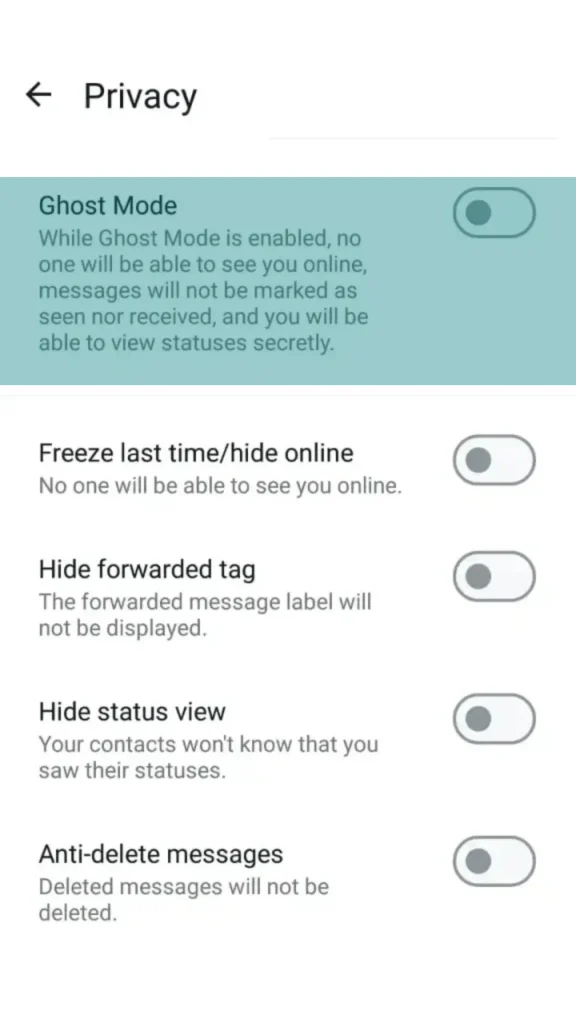
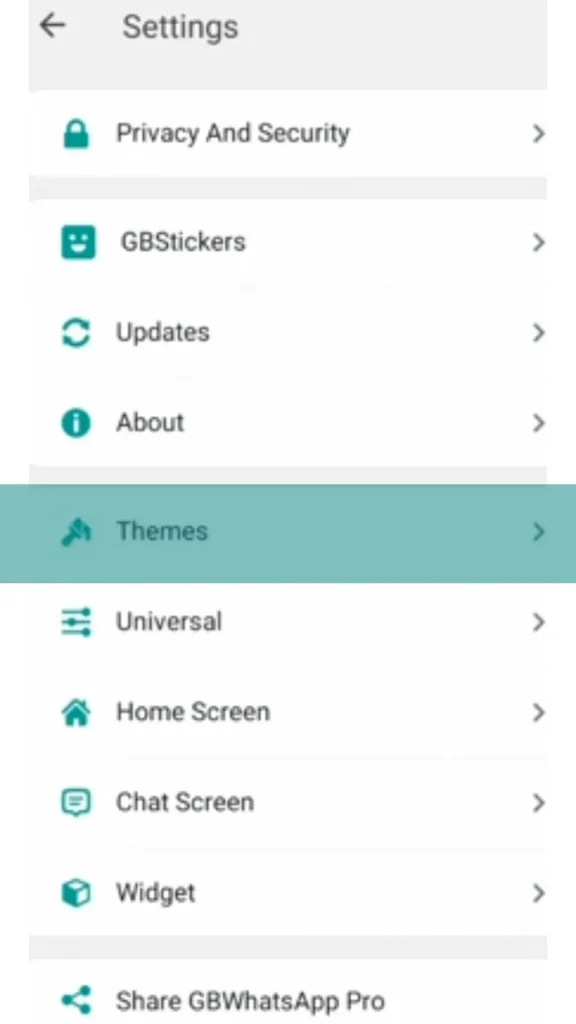
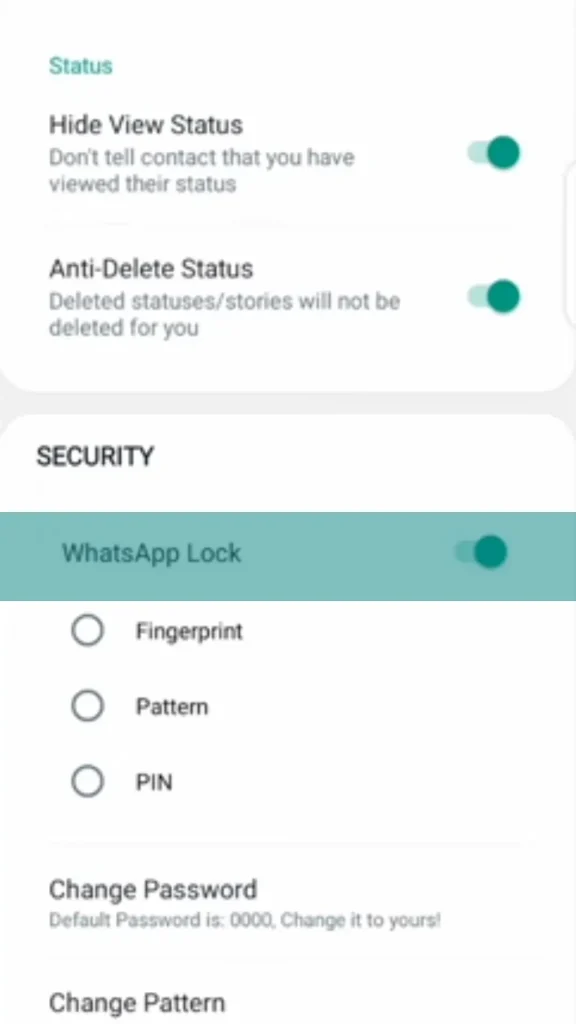


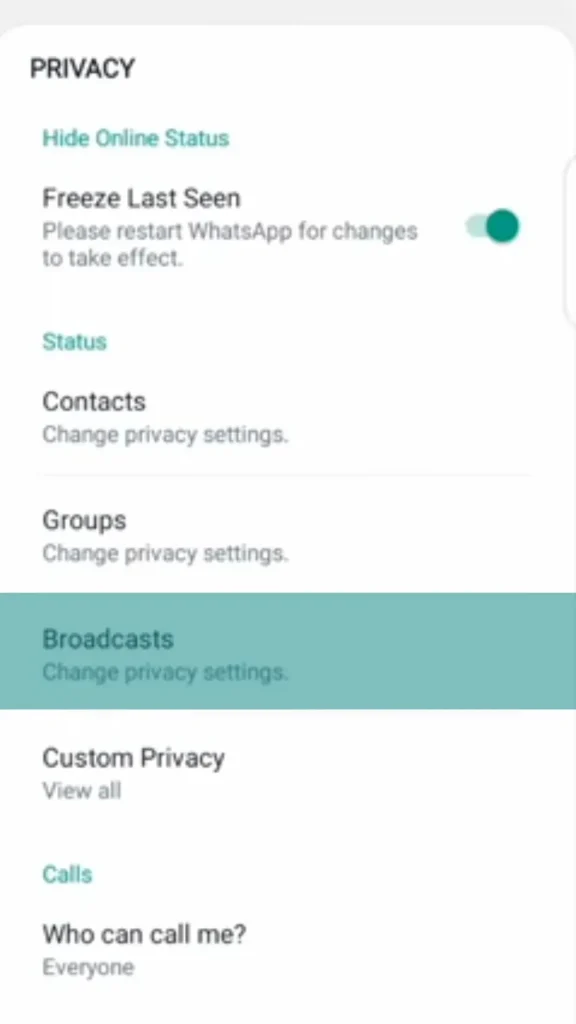


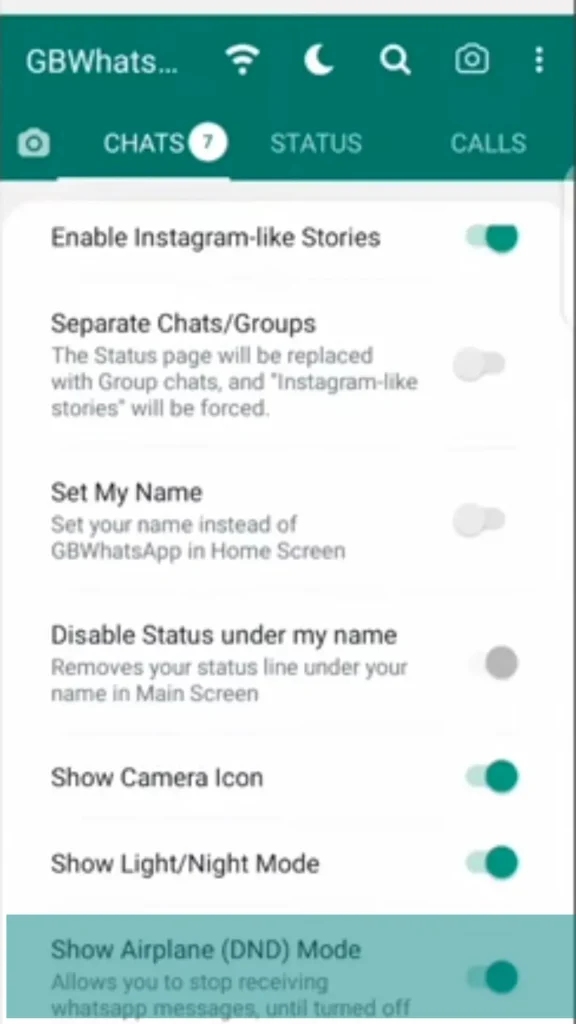
Content
Core Feature Architecture and Functional Mechanics
Privacy Enhancement and User Invisibility Controls
The privacy feature suite within GB WhatsApp establishes a sophisticated control framework that addresses perceived inadequacies in the official application's privacy management tools. The Ghost Mode functionality enables users to maintain complete activity within the application environment—including message reading and status viewing—without broadcasting online presence to their contact network. This feature operates in conjunction with the Freeze Last Seen mechanism, which permits users to lock their last activity timestamp to a predetermined date and time value, effectively preventing contacts from monitoring user activity patterns. The read receipt management system implements dual-layer control through Hide Blue Ticks and Second Tick features. This architectural design allows message reading without triggering delivery confirmation signals, creating an apparent offline status impression. Similarly, the typing and recording indicator suppression features disable real-time status broadcasts during message composition or audio recording activities. The Anti-Revoke mechanism represents a particularly powerful privacy circumvention tool, enabling users to access messages and status updates even after sender-initiated deletion, thereby maintaining persistent visibility of deleted content within the chat interface.Visual Customization and Interface Personalization Systems
GB WhatsApp incorporates an extensive theming engine that provides access to thousands of user-generated visual themes through an integrated theme marketplace. This customization framework extends beyond superficial color modifications, enabling comprehensive interface transformation including icon redesign, layout reconfiguration, and typography alteration. The font management system permits users to modify typeface selection, size parameters, and color schemes across the entire application interface, from primary navigation screens to individual chat bubble presentations. The chat screen customization toolkit facilitates granular control over conversational aesthetics, including bubble appearance modification, per-conversation background customization, and text size adjustment for enhanced readability. Icon customization features extend to the home screen launcher icon, offering multiple alternative design options within the application settings. The emoji and sticker expansion modules provide access to extended emoji libraries and custom sticker pack integration, thereby enriching conversational expression capabilities beyond the standard WhatsApp offering.Media Transmission and File Sharing Capabilities
The media sharing infrastructure within GB WhatsApp implements substantially elevated transmission limits compared to the official application. The image batch transmission capacity supports simultaneous distribution of up to 100 photographs, representing more than a threefold increase over the official application's 30-image limitation. Video file transmission thresholds extend to 100 megabytes, with certain build versions reportedly supporting files up to 700 megabytes, while document sharing capabilities accommodate files reaching 1 gigabyte in size. The quality preservation mechanism circumvents the aggressive compression algorithms employed by the official WhatsApp service, maintaining original media fidelity during transmission. The integrated Status Downloader feature enables direct download functionality for contacts' status media content, depositing files into the device gallery. Status duration extensions permit video status uploads lasting up to 7 minutes, substantially exceeding the standard 30-second constraint, although extended duration visibility remains limited to other users operating modified WhatsApp clients.Advanced Messaging Tools and Productivity Enhancement Features
The productivity feature set within GB WhatsApp addresses power user requirements and small business communication workflows through automation and scheduling capabilities. The Auto-Reply system facilitates automated response transmission upon message receipt, particularly valuable for business account management or scenarios requiring delayed manual response. The Message Scheduler enables advance message composition with timed delivery scheduling for future transmission at specified dates and times. The Bulk Message Sender functionality implements broadcast transmission architecture, permitting single message distribution to multiple contacts without formal group chat creation requirements. The No Contact Messaging feature eliminates the prerequisite of address book entry before message transmission, enabling direct communication with phone numbers absent from saved contacts. Post-transmission message editing capabilities permit content correction within a 15-minute window following delivery, addressing typographical errors or content revision needs.- Ghost Mode enabling invisible online presence during active usage
- Anti-Delete functionality preserving deleted messages and status updates
- Custom theme engine with integrated marketplace access
- Enhanced media sharing supporting 100 images and 100MB videos
- Message scheduling system for automated future delivery
- Dual account support enabling multiple WhatsApp instances
- Built-in app lock with PIN, pattern, and biometric authentication
- Status downloader for direct media content preservation
Security Considerations and Account Suspension Risks
The operational framework of GB WhatsApp introduces substantial security considerations that distinguish it from officially sanctioned applications. The APK distribution methodology necessitates acquisition from third-party sources, creating potential exposure vectors for malware, viruses, and spyware infiltration when downloading from untrusted repositories. The absence of official security auditing processes represents a critical vulnerability, as the modified application code lacks verification by Meta's security infrastructure, despite message transmission occurring through WhatsApp's end-to-end encrypted server architecture. The utilization of GB WhatsApp constitutes an explicit violation of WhatsApp's Terms of Service, establishing the foundation for enforcement action by Meta Platforms. The company implements automated detection systems that identify modified client usage, resulting in potential temporary ban issuance as a preliminary warning measure with time-limited account access suspension. Continued usage following temporary ban notification escalates risk to permanent account suspension, rendering the associated phone number permanently ineligible for official WhatsApp service utilization.Installation Procedures and Data Management Protocols
The installation process for GB WhatsApp on Android devices requires several preliminary configuration steps. Users must first enable installation from unknown sources through device security settings, with newer Android versions implementing per-application permission granting during initial APK installation attempts. APK file acquisition should occur exclusively from developer-designated trusted sources to minimize malware exposure risk. The installation sequence proceeds through file manager navigation to the downloaded APK, followed by on-screen prompt completion for installation finalization. Update management necessitates manual intervention, as GB WhatsApp lacks automated update functionality inherent to official app store distribution channels. Users must manually acquire updated APK versions from official developer sources and install directly over existing installations without prior uninstallation, thereby preserving chat data and configuration settings. The backup architecture relies primarily on local device storage rather than cloud infrastructure, representing a significant operational divergence from the official application's Google Drive integration. Users initiate manual backups through the GB Settings interface under the Chat Backup option, creating local storage copies of messages and media content.Comparative Analysis: Official WhatsApp versus Modified Client
The decision framework for selecting between GB WhatsApp and the official WhatsApp application fundamentally centers on the trade-off between enhanced functionality and guaranteed security stability. GB WhatsApp delivers unlimited customization capabilities through comprehensive theme support, dual account operation on single devices, and advanced privacy controls including activity indicator suppression and deleted message viewing. The official application maintains advantage in automatic update delivery through Play Store integration, comprehensive customer support infrastructure, and Meta-conducted security auditing processes that validate application integrity. The account suspension risk represents the most significant distinguishing factor, with GB WhatsApp users facing potential temporary or permanent bans, while official application users operate without such enforcement concerns. The media sharing differential remains substantial, with GB WhatsApp supporting 100-photo transmission and 100MB video files compared to the official limit of 30 photos and 16MB videos. Additional modified WhatsApp alternatives including FM WhatsApp, Yo WhatsApp, WhatsApp Plus, and Aero WhatsApp occupy similar market positions within the modified messaging application ecosystem.Conclusion: Evaluating Risk-Benefit Dynamics in Modified Application Usage
GB WhatsApp establishes itself as a feature-rich alternative within the mobile messaging application landscape, delivering substantial functional expansion over the official WhatsApp platform through privacy enhancement tools, customization frameworks, and media sharing capability extensions. The application appeals particularly to power users seeking granular control over communication privacy settings and aesthetic presentation, alongside users requiring dual account operation or enhanced media transmission limits. However, the operational framework inherently incorporates security vulnerabilities stemming from third-party distribution channels, absence of official security validation, and explicit Terms of Service violations that establish account ban risk exposure. The selection decision between GB WhatsApp and official WhatsApp ultimately reflects user prioritization between feature expansion and security stability, with informed risk acceptance serving as the prerequisite for modified application adoption within the Android mobile platform ecosystem.Understanding GB WhatsApp: A Modified Messaging Platform
GB WhatsApp represents a third-party modification of the standard WhatsApp messaging application, developed initially by Atnfas Hoak in 2014 and subsequently maintained by development teams including AlexMods and HeyMods. This modified client connects to the same server infrastructure as the official application, enabling users to communicate seamlessly with contacts using either version. The modification introduces extensive functionality beyond the standard messaging experience, transforming how users interact with privacy settings, customize their interface, and manage multimedia content. Unlike the official application, GB WhatsApp requires manual installation through APK files and operates outside the traditional app store ecosystem, positioning it as a community-driven alternative for users seeking enhanced control over their messaging environment.
Mastering Privacy Controls and Visibility Management
The privacy features in GB WhatsApp function as a comprehensive invisibility system, granting users unprecedented control over their digital presence. Ghost Mode enables users to read messages and view status updates while maintaining complete invisibility to their contacts, preventing the “online” indicator from appearing during active sessions. The Freeze Last Seen feature allows users to lock their activity timestamp at a specific moment, creating a static presence that conceals actual usage patterns. These features interact with the broader privacy ecosystem by providing selective transparency—users can observe contact activities while controlling their own visibility metrics.
The blue tick and second tick hiding mechanisms alter the fundamental communication feedback loop by preventing read receipts and delivery confirmations from reaching message senders. When users activate these features, they can consume message content without triggering the visual indicators that traditionally signal message engagement. The typing and recording indicator controls extend this privacy framework by suppressing real-time activity notifications, allowing users to compose responses without alerting conversation partners to their active participation. This creates an asynchronous communication environment where users maintain temporal control over their engagement patterns.
Advanced Message Management and Content Preservation
The Anti-Revoke feature fundamentally changes message permanence by preserving deleted content within the recipient’s chat window, even after the sender removes it from the conversation. This mechanism captures both text messages and status updates before deletion, storing them locally for continued access. The View Once Bypass function circumvents sender-imposed content restrictions by allowing recipients to save and replay media items designated for single viewing, effectively overriding the ephemeral content settings that senders apply to sensitive photographs and videos. These features create a permanent record of communication that persists beyond the sender’s content management intentions.
The Activity Log tracks contact behavior across multiple dimensions, recording profile picture changes, status updates, and online activity patterns. This monitoring system provides users with a chronological record of contact actions, enabling pattern recognition and social awareness beyond the standard application’s notification framework. The forwarded tag removal feature modifies message attribution by stripping the “forwarded” label from redistributed content, making forwarded messages appear as original compositions when shared with new recipients.
Customization Systems and Interface Personalization
The theme engine in GB WhatsApp functions as a complete interface transformation system, offering thousands of user-generated designs through an integrated theme store. Users can apply themes that modify color schemes, icon sets, and layout arrangements with single-tap activation, creating personalized visual environments. The font customization system extends this personalization by allowing users to modify typeface styles, sizes, and colors throughout the application interface, from navigation screens to individual chat bubbles. Chat screen customization enables conversation-specific modifications, including unique backgrounds for individual contacts and adjustable text sizes that enhance readability across different viewing contexts.
Icon customization allows users to replace the default application launcher icon with alternative designs, modifying the home screen presence of the application. The expanded emoji and sticker systems provide additional expressive elements beyond the standard messaging toolkit, enabling users to communicate through diverse visual languages. These customization layers interact synergistically, allowing users to construct completely unique messaging environments that reflect personal aesthetic preferences while maintaining core functionality.
Media Sharing Capabilities and File Transfer Systems
GB WhatsApp dramatically expands media sharing limits compared to the official application, allowing users to transmit up to 100 images in a single batch—more than triple the standard 30-image restriction. Video file transfer capabilities reach 100 megabytes in most versions, with some implementations supporting files up to 700 megabytes, enabling users to share high-quality video content without external compression. Document sharing extends to 1 gigabyte for non-video file types, accommodating professional documents, presentations, and large data files within the messaging framework.
The high-quality media transmission feature preserves original image and video fidelity by bypassing the aggressive compression algorithms that the official application applies to reduce bandwidth consumption. This preservation system maintains visual quality for photography enthusiasts, content creators, and professional users who require uncompromised media delivery. The status downloader integrates directly into the interface, enabling users to save contact status photos and videos to their device gallery with simple touch interactions, creating a local archive of ephemeral content.
Productivity Tools and Communication Automation
The auto-reply system enables users to configure automated responses that activate when messages arrive, creating passive communication channels useful for business accounts or unavailability periods. The message scheduler functions as a temporal control mechanism, allowing users to compose content immediately but defer transmission to specific future timestamps, enabling strategic communication timing and timezone management. The bulk message sender distributes identical content to multiple contacts simultaneously without creating visible group conversations, serving broadcast communication needs for announcements and mass notifications.
No-contact messaging removes the requirement for address book entries before message transmission, enabling users to communicate with phone numbers directly through a dedicated interface. The sent message editing feature provides a 15-minute window for content modification after transmission, allowing users to correct errors or update information without message deletion and resending. Voice changer effects apply real-time audio modifications during calls, offering novelty filters and anonymity features. Screen sharing during video calls enables users to broadcast their device display to conversation partners, facilitating demonstrations, collaborative viewing, and technical support scenarios.
Account Management and Multi-Device Operations
The dual account support system allows GB WhatsApp to operate alongside the official application on a single device, enabling users to manage separate phone numbers and contact lists independently. This parallel operation creates distinct communication channels without device switching or multiple hardware requirements. For desktop usage, users must employ Android emulators such as BlueStacks or NoxPlayer to create virtual Android environments on personal computers, as native desktop clients lack the modified application’s extended feature set. The backup system relies primarily on local storage rather than cloud integration, requiring users to manually create chat archives within the application settings before device transfers or reinstallations.
Strategic Considerations and Risk Assessment
Users must balance the extensive feature set against significant operational risks, including potential account suspension by Meta’s automated detection systems, which issue temporary bans as warnings before implementing permanent phone number blocks. The absence of official security audits creates vulnerability potential within the modified code, despite messages utilizing WhatsApp’s end-to-end encrypted server infrastructure. Manual update requirements replace automatic maintenance systems, placing update responsibility and timing entirely on users. The lack of official customer support removes troubleshooting resources for technical issues, compatibility problems, or functionality errors that emerge during usage.